Saint Peter the Apostle Catholic Church
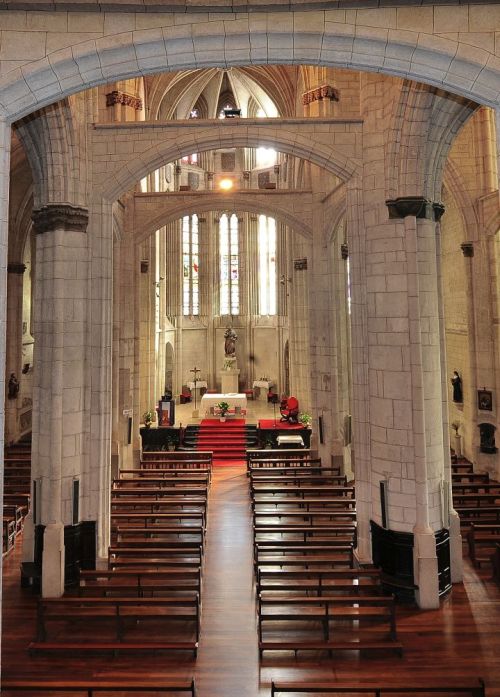
The Parish of Saint Peter is a church built mostly in the 14th century. It is one of the most beautiful examples of Gothic architecture in the Basque Country. Prior to the current building, a small church from the 13th century probably occupied the same area.
Since the primitive church was adjacent to the wall defending the Western part of the town, the current temple has a fortress character. The Zapardiel river, flowing now under Siervas de Jesús street, served as a natural moat. Today it is still possible to observe the fortress character of the church from that street, that follows the line of the wall of the 13th century.
Popular devotion has kept alive in the Parish important brotherhoods, dedicated to Saint Isidore the Farmer, the Guardian Angel, the Mother of Fair Love, Saint Anthony of Padua and Our Lady of the Pillar.
The Church of Saint Peter
Choir
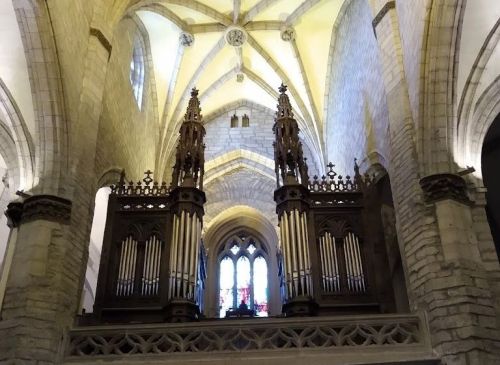
It was probably built in the end of the 15th century. The low choir is covered with three sections of ribbed vault, that correspond to the three naves of the church. The stone baluster is recent. The current organ, made by the German craftsman S.R. Melcher, was installed in 1925.
Baptistery
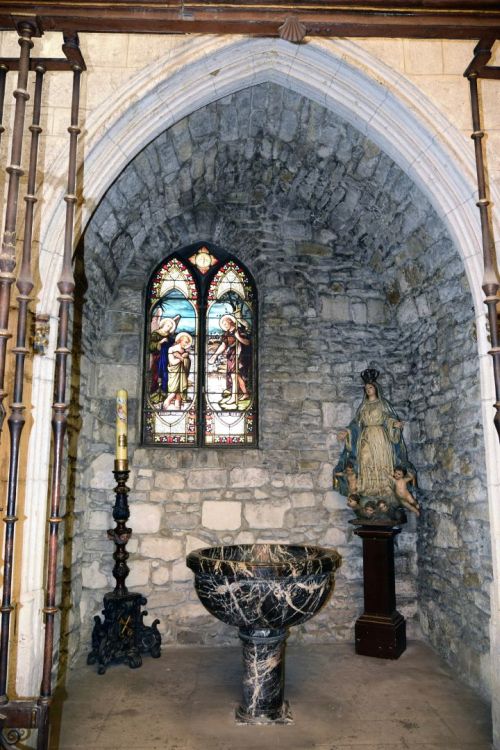
It is placed at the end of the transept, near the “Old Portal”. From the construction of the church until recent times the baptistery was placed adjacent to the North wall of the temple. The current marble baptismal font dates from 1785. Due to the works of the new portal, in the end of the 19th century, the baptistery was relocated to its present site.
East or Old Portal
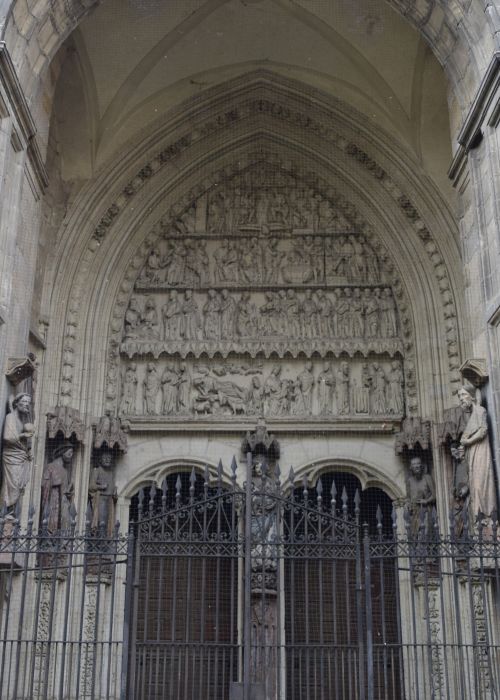
This portal, open to Herrería street, is one of the masterpieces of Gothic art in Northern Spain.
Tympanum
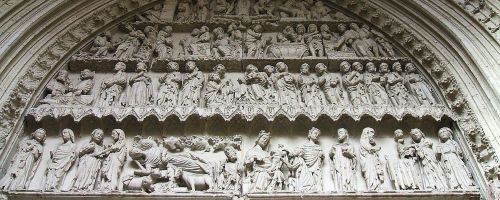
The tympanum stands out for its beauty and its iconography. Below, in the lintel there are scenes of the life of the Virgin and of the childhood of Christ: The Annunciation, the Visitation, the Nativity, the Adoration of the Three Wise Men and the Presentation in the Temple.
Above the lintel, the images represent scenes of the life of Saint Peter: his vocation, the institution of the Primacy, Peter walking on the water, his vision in Joppa, his preaching in Cornelius’ house, the baptism of the centurion and his imprisonment.
In the superior part, an angel releases Saint Peter from prison, while his warden sleeps. In the centre of this part, close to the keystone, there is an image of the martyrdom of Saint Peter.
Mullion
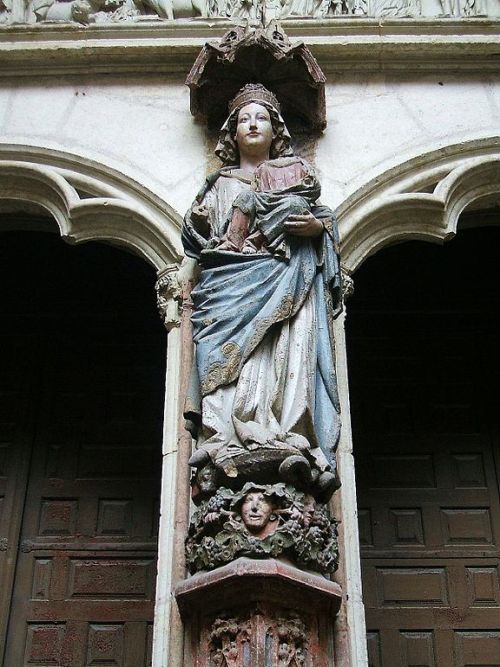
In the mullion of this arch there is a Gothic sculpture of Our Lady. It is one of the most beautiful examples of Medieval art in the town.
Representation of the Apostles
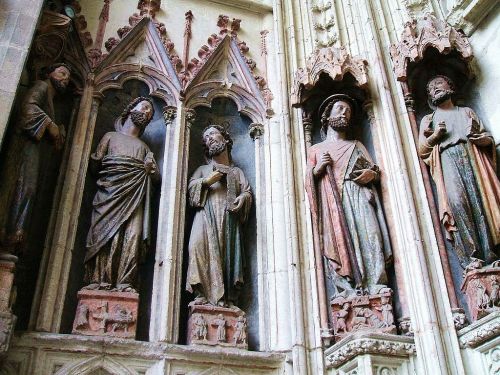
The representation of the twelve Apostles in this portal is one of the best Gothic monumental sculptures in the country. In the columns of the arch, those to the right of the viewer represent Saint Paul and Saint John; to the left, Saint Peter and Saint James. The other eight apostles are distributed on the walls of the portal. The statues of this portal used to be polychromed, but they lost their colour in recent times. This portal has been declared National-Artistic Historical Monument.
Main Chapel
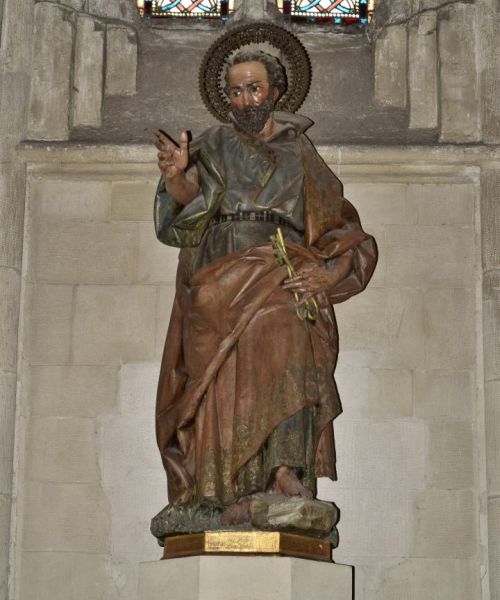
The Main Chapel was renewed in the beginning of the 20th century, disassembling a great Baroque reredos, built in the last years of the 17th century. A Catalan sculptor made in 1901 the statue of Saint Peter that presides the church. It is a splendid image, placed nowadays over an undecorated stone pillar.
Gothic tomb of the Álavas
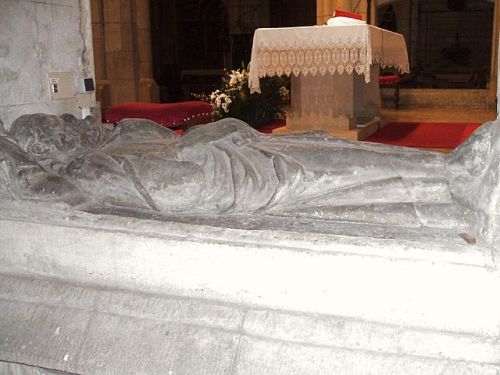
There are four interesting sepulchres open in the ‘ochavos’ (each one of the eight sides of the sanctuary) of the Main Chapel. The first one, to the right of the viewer, is the Gothic stone tomb of the Álavas. It is the oldest tomb in the church and can be dated in the last years of the 14th century. Above this sepulchre, stands out the coat of arms of the Álavas.
Tomb of Don Pedro Martínez de Álava
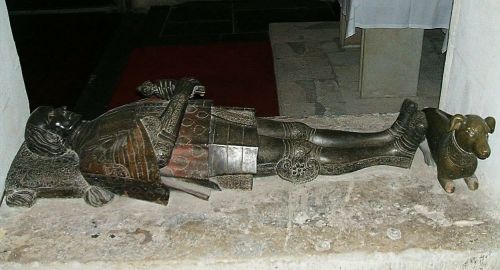
This tomb is placed in the first ‘ochavo’ of the left side. It is the sepulchre of Don Pedro Martínez de Álava, represented in a beautiful recumbent marble bust. The experts consider this tomb a hidden gem of the funerary sculpture of the Renaissance (first half of the 16th century).
Tomb of Don Diego de Álava y Esquíbel
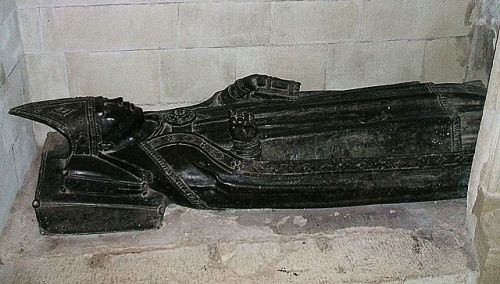
In the second ‘ochavo’ on the same side stands out the grave of Don Diego de Álava y Esquíbel, son of Pedro Martínez de Álava. Don Diego was an eminent theologist, bishop of Astorga, Ávila y Córdoba. He died in 1562.
Tomb of Juan Ruiz de Vergara
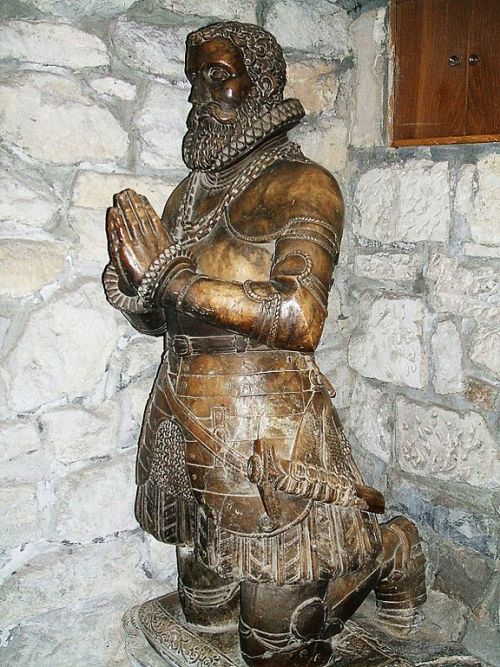
In the second ‘ochavo’, to the right of the viewer, there is a beautiful alabaster prayer statue. This is the grave of Juan Ruiz de Vergara, a prominent parishioner of Saint Peter.
Apsidal Chapel of Our Lady of Grace
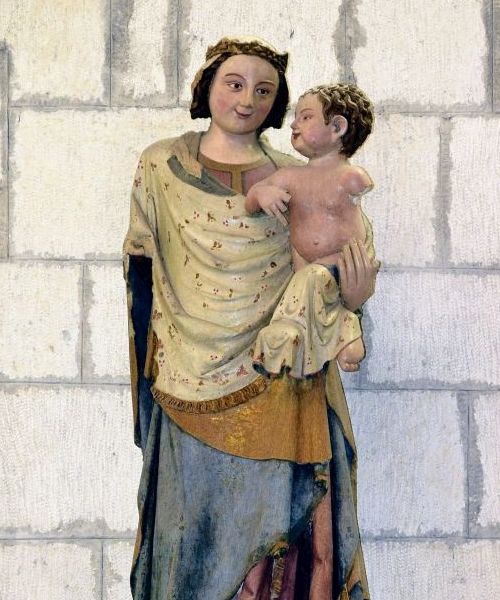
In this chapel there is a beautiful Gothic sculpture in polychromed stone of Our Lady of Grace, probably from the beginning of the 15th century.
Apsidal chapel of Saint Isidore
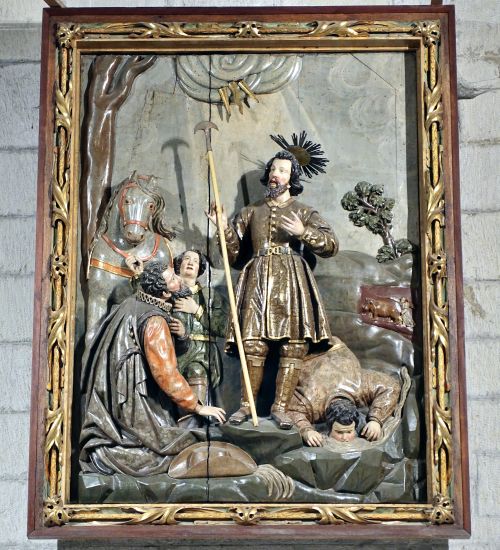
The apsidal chapel adjoining the sanctuary, in the left nave, belongs today to the Brotherhood of Saint Isidore the Farmer. The altarpiece, without any artistic valour, has in the centre a bass-relief from the 18th century. It represents a miracle of Saint Isidore, when he made to flow a fountain in the fields of his master.
Tomb of the Estellas
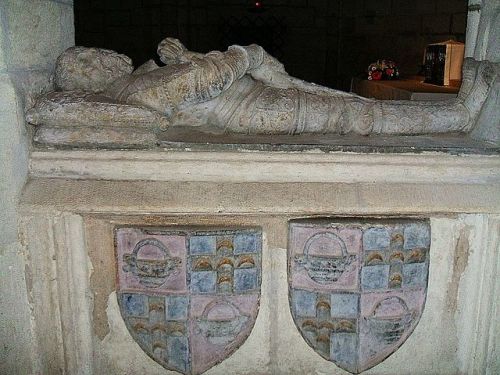
To the right of the altar there is another sepulchre, with a stone recumbent statue. It is a magnificent work from the first half of the 16th century. It was property of the García de Estellas, a family that founded a hospital in Zapatería street.
Apsidal Chapel of Our Lady of the Sorrows
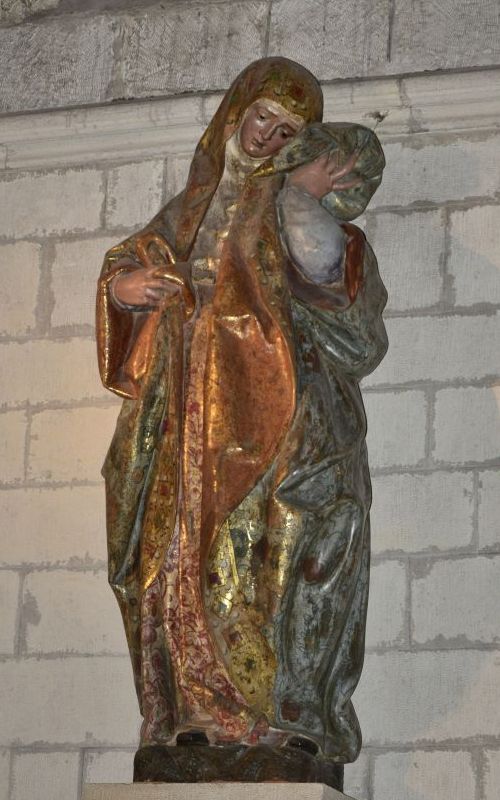
The apsidal chapel at the head of the church, on the end of the left side, is dedicated to Our Lady of the Sorrows. The sculpture of the ‘Virgen Dolorosa’ is one of the best artworks in the church. The great dimensions of the statue suggest that it was carved to be placed quite high on a reredos (18th century).
Altarpieces of Estíbaliz and El Pilar
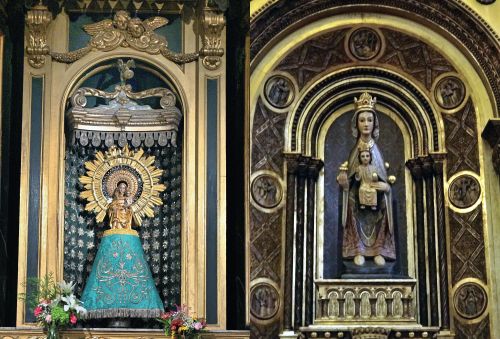
They are modern works, without special historical o artistic value.
Chapel of Saint Anthony of Padua
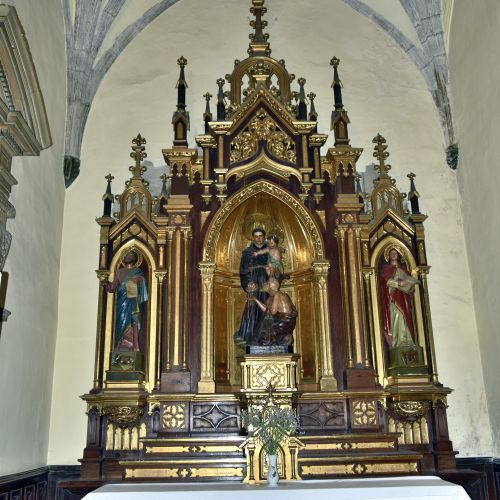
It is placed in the left nave of the church, close to the choir.
Altarpiece of the Saint Christ
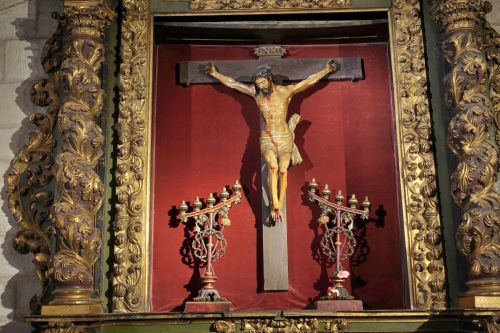
The image of Christ on the Cross is a beautiful wood carving made in the end of the 16th century or in the beginning of the 17th century.
Chapel of the Kings
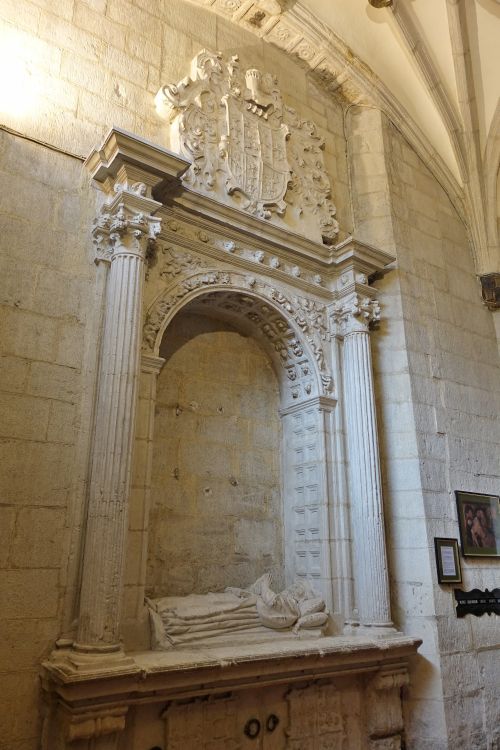
This chapel was located in the current entrance of the church, where still can be seen the sepulchre of its founder, Don Diego Martínez de Salvatierra, scrivener of the town.
Altarpiece of the Three Kings
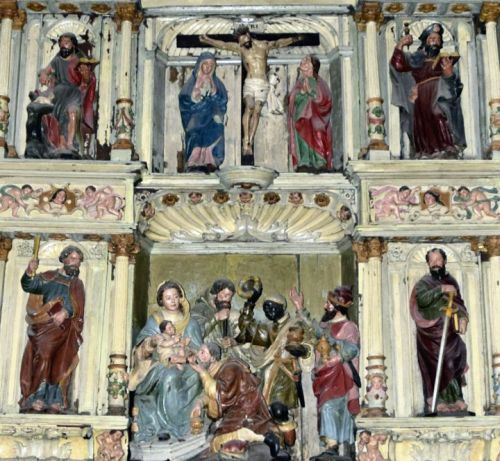
This reredos is one the most important works of Renaissance Art in Vitoria. In the centre of the altarpiece there is a beautiful sculpture that represents the visit of the Magi.
Altarpiece of the Guardian Angel
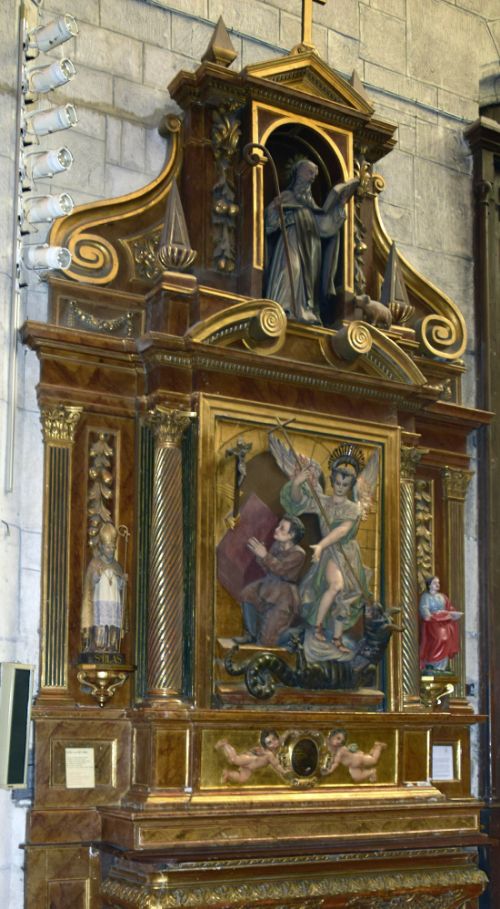
Nowadays, this altarpiece is located in front of the reredos of the Kings. It came from the collapsed church of Saint Ildefonsus, where already at the beginning of the 17th century there was a brotherhood dedicated to the Guardian Angel.
South Portico
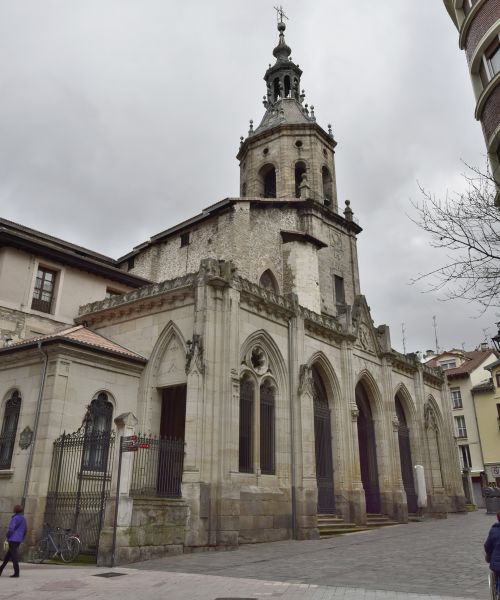
It is a recent construction (1897), in Neogothic style. The current entrance to the church is placed in this portal.
Tower
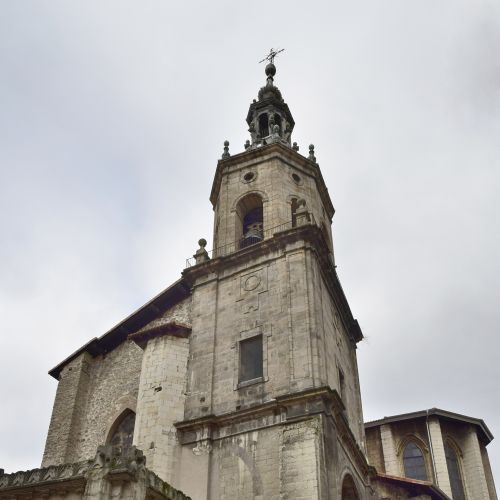
It was erected during the 18th century.
Fundadora de las Siervas de Jesús, 2
01001 Vitoria-Gasteiz
Álava/Araba
Teléfono: 945 25 41 93 / 650 96 12 71
Email: sanpedrogasteiz@telefonica.net
